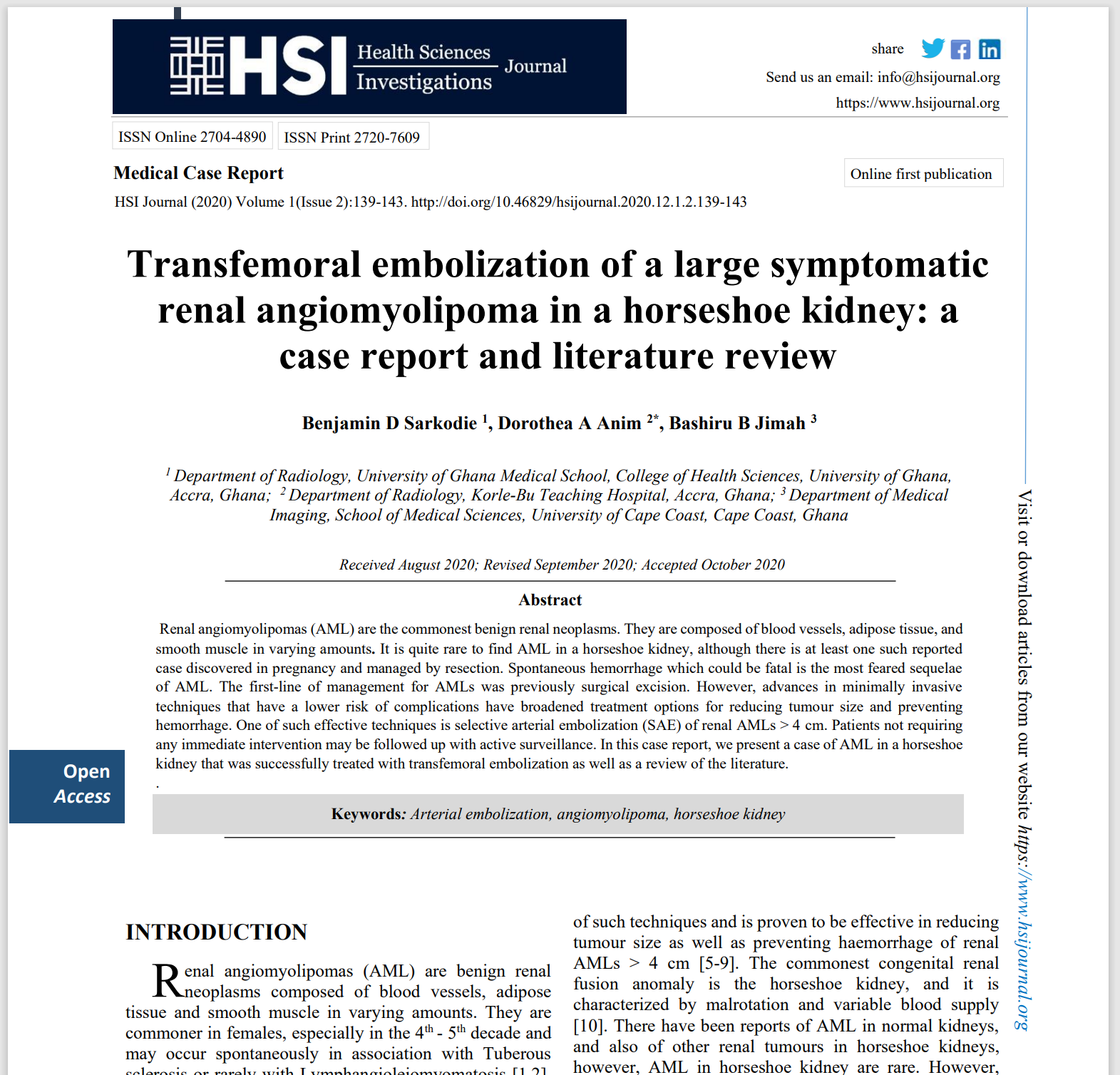Transfemoral embolization of a large symptomatic renal angiomyolipoma in a horseshoe kidney: a case report and literature review
Transfemoral embolization in a horseshoe kidney
Abstract
Renal angiomyolipomas (AML) are the commonest benign renal neoplasms. They are composed of blood vessels, adipose tissue, and smooth muscle in varying amounts. It is quite rare to find AML in a horseshoe kidney, although there is at least one such reported case discovered in pregnancy and managed by resection. Spontaneous hemorrhage which could be fatal is the most feared sequelae of AML. The first line of management for AMLs was previously surgical excision. However, advances in minimally invasive techniques that have a lower risk of complications have broadened treatment options for reducing tumour size and preventing hemorrhage. One of such effective techniques is selective arterial embolization (SAE) of renal AMLs > 4 cm. Patients not requiring any immediate intervention may be followed up with active surveillance. In this case report, we present a case of AML in a horseshoe kidney that was successfully treated with trans-femoral embolization as well as a review of the literature.


